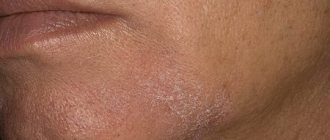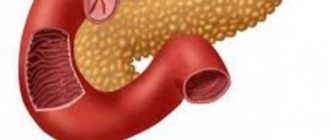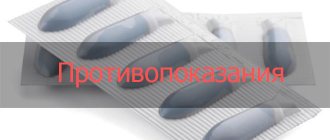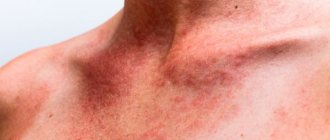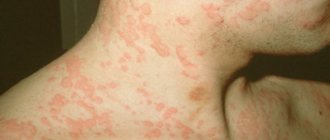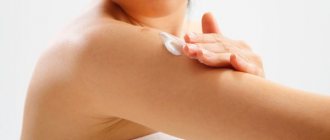What is dust?
Dust particles can be found in any room or outdoors. The allergen in them are particles of microscopic mites, their metabolic products. There are several types of dust:
- Street pollution is a mixture of various substances: soil, soot, bird excrement, microparticles of car tires. It gets into the apartment by settling on shoes, clothes, and flying through the window. The lower the apartment is located, the more of it there will be in the rooms.
- Household - it is also called home. Present in any room. It is a mixture of numerous components: pet hair, particles of epidermis, fabric, powder remaining from household chemicals. Such a suspension is fraught with the development of asthma and allergic reactions.
- Gypsum - located in those rooms where there are parts made of gypsum. Small particles irritate the respiratory tract.
- Static is ordinary house dust that has been electrified by electrical appliances. Because of this, it is constantly in the air, which accelerates the development of lung diseases.
- Book - formed by the destruction of paper: old wallpaper and books, accumulated boxes. It accumulates mainly on bookshelves. It easily enters the lungs, which is why allergic reactions often occur.
- Wood - typical for woodworking enterprises and carpentry workshops. Small sawdust that appears during wood processing gets clogged into the respiratory tract, causing coughing, headaches, dizziness, and nasal congestion.
Industrial dust belongs to a separate group. It is formed as a result of processing various materials, working with chemicals and reagents. When working in industrial premises, you need to wear a respirator to protect your respiratory tract and lungs.
Street dust
Where does dust come from and why is there so much of it?
In every home there are sure to be corners where dust accumulates. Even the cleanest apartments are unlikely to pass the white glove test. Dust particles easily penetrate under the bed, right up to the ceiling, onto a chandelier or closet. House dust is generally the most common cause of allergies.
What is house dust? It consists of carpet pile fibers, toy fur, upholstery fabrics of upholstered furniture, as well as epidermal scales - your own and your pets. Add here their wool, as well as microparticles brought from the street on clothes, and you will understand what kind of “cocktail” house dust consists of.
Dust often contains toxins released by insects and microorganisms that live in your home. In addition to cockroaches and spiders, your home can be home to a huge number of microscopic mites that love natural products and therefore settle in woolen carpets and blankets. A piece of dust weighing as much as a paper clip contains about nineteen thousand dust mites!
Types of allergies
Depending on what type of dust affects the body, different symptoms appear. A phenomenon called cross-allergy to dust often occurs. For example, if we are talking about street dust, the allergen can be not only foreign particles, but also plant pollen, which will aggravate the general condition. An allergy to flour suspension is accompanied by negative reactions to household products.
For construction dust
During construction work, people come into contact with different materials. Cement particles that enter the respiratory tract lead to the development of asthma. In addition, the following complications may occur:
- urticaria - redness of the skin, severe itching;
- Quincke's edema - swelling of the throat, difficulty breathing;
- bronchial asthma.
Allergies to construction dust can manifest with various symptoms. They depend on what substances irritate the body. Symptoms of a wood dust allergy:
- headache;
- muscle weakness;
- conjunctivitis;
- difficulty breathing;
- nasal congestion;
- cough.
Symptoms of an allergy to cement dust:
- dermatitis;
- itching;
- skin redness;
- dizziness;
- cough;
- conjunctivitis.
Construction dust
For household dust
Allergies to household dust are considered the most common. It often occurs in people who rarely clean or ventilate their premises. It is most dangerous for young children. Signs of an allergy to house dust in a child:
- lacrimation;
- cough;
- weakness when indoors;
- severe deterioration in health at night when the person is sleeping;
- dizziness, headache.
To accurately verify the presence of the disease, it is necessary to carry out a series of diagnostic procedures, which are prescribed by the attending physician.
For nail dust
Allergies to nail dust among manicurists have been occurring more and more often lately. When performing a cosmetic procedure, the specialist uses various chemicals that can become allergens. Main manifestations:
- sneezing;
- cough;
- redness of the eyes;
- difficulty breathing;
- itching;
- soreness;
- rash.
If such symptoms are present, you must immediately stop professional activities and consult an allergist.
Sneezing
To the book dust
Allergic reactions to book dust often affect archive and library workers who constantly work with books and old documents. This type of disease is difficult to treat, which is why it cannot be started. Symptoms of an allergy to paper dust:
- lacrimation;
- redness of the eyes;
- attacks of suffocation;
- development of bronchial asthma;
- hoarseness of voice.
Paper suspension contains a large amount of harmful substances that can seriously harm the body.
For dust mites
Dust mites are the strongest source of allergens. It is impossible to notice these creatures with the naked eye. They feed on dead pieces of the epidermis. Symptoms of dust mite allergy:
- itching in the nose;
- swelling of the eyes; lacrimation;
- runny nose;
- sneezing.
The patient will feel better on the street, but worse at home.
Dust mite under a microscope
Symptoms and signs of dust allergies
Allergy to dust in infants rarely develops in the presence of a hereditary predisposition.
There are 5 main types of allergies in adults, which differ in their clinical picture. It is impossible to determine the type of negative immune reaction in advance, since it depends on the number of potential allergens in the dust coma.
The area where they end up also plays an important role. These places include mucous membranes, respiratory organs or skin. A child may develop several types of allergies at once.
Dust allergies can take a chronic form. Exacerbations develop when an allergen enters the body, and in its absence, a stage of remission occurs.
Allergic conjunctivitis
Causes swelling of the mucous membranes of the eyes, occurring in mild, moderate or severe form. Allergic conjunctivitis is accompanied by:
- Redness of the conjunctiva. Small vessels become clearly visible on the whites of the eyes, and hyperemia of the sclera is observed.
- Increased tear production. Histamine causes irritation of the lacrimal sac, resulting in the production of large amounts of fluid.
- Inflammation and redness of the eyelids. Due to swelling, the eye partially closes.
- The appearance of Horner-Trantas spots. These are yellowish dots that develop against the background of keratoconjunctivitis. In this case, the skin around the eyes turns pale due to the outflow of blood.
- Swelling of the face. Occurs only in severe cases of allergic conjunctivitis or Quincke's edema.
In 95% of allergy cases, both eyes are affected.
Allergic rhinitis
Develops in 85% of people with allergies. Characterized by the following symptoms:
- frequent sneezing;
- itching in the nasopharynx and nasal passages;
- swelling of the mucous membranes;
- discharge of clear fluid from the nose;
- congestion that develops after contact with dust.
Symptoms of rhinitis are relieved at night, due to the release of hormones with anti-inflammatory properties. Mostly after 20:00, the production of cortisone and hydrocortisone is observed, which relieve swelling and nasal congestion.
If, instead of clear liquid, purulent yellow-green exudate begins to flow, this indicates the development of an infection in the paranasal sinuses.
Atopic dermatitis (eczema)
The skin is affected gradually. The allergy is chronic and manifests itself in childhood from 5 to 12 years. The following clinical picture is observed:
- Severe itching. Occurs during an exacerbation period. The severity of the symptom increases during contact with dust, under stressful conditions, or when chemical irritants come into contact with the skin: salt, acetic acid, ethanol.
- Dryness. Histamine causes swelling of soft tissues, which increases and compresses the vessels in the subcutaneous fat. As a result, epithelial cells do not receive the necessary oxygen and nutrients in sufficient quantities. The production of sweat and sebum decreases, and the skin dries out.
- Swelling of the lips, development of cheilitis.
- Peeling, formation of trophic ulcers. At the age of 9-12 years, wet ulcers begin to appear on the skin, causing pain and discomfort. After 15-18 years, they are accompanied by abundant peeling.
- Dermographism. The symptom is checked using a ruler - it is pressed against the eczema and waited for 20 seconds. In allergic dermatitis, white spots do not go away within 120 seconds due to compression of blood vessels.
At the age of 12, ulcers form more often in the joint area, on the face or lower leg. In older people, eczema spreads to the back of the head, neck, upper limbs and chest.
Hives
Diagnosis of urticaria is carried out during an external examination of a person. The pathological process is accompanied by the development of the following symptoms:
- Blisters of different sizes. Around the tumors, the skin turns red, irritation and severe itching begin. They disappear on their own within 24-30 hours.
- Inflammation and periodically manifested hyperemia. The lesion is characterized by pain and does not itch. Swelling goes away within 72 hours.
- The appearance of spots on the skin. They come in red and brown colors. When scratched, the skin swells and fills with fluid.
Hives develop quickly as a result of large amounts of allergen entering the body. Relapse occurs rarely.
Angioedema
Clinical picture:
- increased skin temperature, redness;
- development of urticaria.
The pathological process develops over several hours or days. With hormonal therapy with glucocorticosteroids, symptoms disappear within a day.
Diagnostics
Before prescribing treatment, the doctor must conduct diagnostic procedures to confirm or refute the diagnosis. To do this, he must give a referral for tests and interview the patient.
How to distinguish it from a cold?
The symptoms of a dust allergy are very similar to those of a cold. Therefore, problems may arise during diagnosis. There are two factors to pay attention to:
- Time of onset of unpleasant symptoms. If they are associated with hypothermia, it is most likely a cold.
- Nasal discharge – If it is clear, it may be a sign of an allergic reaction.
Signs of an allergic reaction last much longer than the symptoms of a cold.
How to properly collect samples of dust particles for a doctor?
To make an accurate diagnosis, your doctor will ask you to collect dust samples. When collecting dust particles, you must follow a number of rules:
- dust is collected from upholstered furniture, curtains;
- a vacuum cleaner with clean filters is used for collection;
- the resulting suspension is sifted through a sieve and poured into a clean container.
To analyze particles, it is enough to collect less than half a teaspoon of dust.
Collecting dust particles from the sofa
Disinfection
It is possible to fight ticks at home.
To do this, subject problem areas and things to heat treatment. For example, you can remove ticks from clothes by ironing them on both sides. Pillows and mattresses should be sent for special cleaning. If necessary, you need to call professional disinfectants. The current remedy for Demodex mites is DEMODEX COMPLEX. This is a set consisting of soap, tonic, KANG cream for morning use and Xinsheng cream for application at night.
These drugs are proven and considered the most effective against mites living in household dust. With the help of these remedies you will protect your skin from re-infection. Washing with Demodex complex soap can be used as a preventive measure against contact with ticks.
Treatment
When an allergy to dust is detected, the principle of treatment for the disease is chosen by the attending physician. When treating a dust mite allergy, the patient is prescribed complex therapy, including medications and folk remedies. It is necessary to talk in more detail about each type of treatment.
Barrier drugs
Many people do not know whether dust allergies can be cured. It is impossible to completely cure the patient, but it is possible to stop attacks in a timely manner, alleviate the general condition, and strengthen the immune system. To ensure that the allergen enters the body as little as possible, you can use barrier drugs - Prevalin, Nazaval plus. These are medicated nasal sprays.
General drug therapy
The basis of the treatment course for dust allergies includes taking several basic medications:
- Clemastine, Suprastin, Cetirizine, Loratadine, Diphenhydramine. These are type 1 histamine blockers.
- Ketotifen - is prescribed if the drugs listed above do not bring the desired result.
If the intensity of symptoms does not decrease, the condition worsens, it is necessary to use hormonal agents.
Taking medications
Local drug therapy
Allergies to dust mites and other allergens are accompanied by many unpleasant, painful symptoms. For their treatment, local therapy is prescribed. The drugs used include:
- CromoHexal, Lecrolin, Ketotifen.
- Azelastine, Levocabastine.
- Fluticasone, Budesonide.
For children and adults, only the dosages change, but not the medications.
Specific immunotherapy
After treatment, unpleasant symptoms and allergic attacks may continue to occur. In such situations, patients are prescribed specific immunotherapy. The principle of treatment is that the allergen is introduced into the body in small doses. Gradually, the dosage increases and the body gets used to the irritants and develops immunity.
Folk remedies
Many doctors recommend using folk remedies as additional therapy:
- Compress based on a decoction of cornflower flowers. Helps against conjunctivitis. It is enough to mix 500 ml of boiling water with a teaspoon of dried inflorescences. Leave for 20 minutes.
- Rinse the nasal cavity with a solution based on table salt.
- Wash clothes by adding eucalyptus oil.
You cannot experiment with folk remedies. This can lead to a deterioration in your general condition.
How to treat with homeopathy?
Homeopathic preparations contain a minimal amount of allergen. The body gradually strengthens and begins to develop immunity.
Additional measures
In addition to various treatment methods, certain measures must be followed to reduce the risk of the allergen entering the body.
Which mattresses are better?
The best choice for this disease is latex mattresses. This material is reliable, durable and does not attract dust mites. In addition to it, there are other cheap hypoallergenic materials - foam rubber, synthetic winterizer.
Which vacuum cleaners to choose?
For allergy sufferers, it is better to choose vacuum cleaners with the following characteristics:
- presence of wet cleaning function;
- It is advisable that the equipment be equipped with a water filter;
- power about 400 W;
- presence of an aquafilter.
Disposable dust bags must be used.
Washing vacuum cleaner
What can replace carpet?
The best option instead of a standard carpet would be any rug made of coarse materials that does not have lint.
Which blanket to choose?
For allergy sufferers, it is best to choose blankets with silicone filling or holofiber.
Complementary and alternative treatments at home
How to treat allergies if you cannot consult a doctor?
- Rhinitis . Rinsing your nose with warm salt water will help get rid of allergic rhinitis. This procedure will remove microscopic particles of household dust from the nasal passages. You can use a special syringe designed for rinsing the nose, or simply draw salt water into the nasal cavity from the palm of your hand.
- Conjunctivitis . If this ailment does not cause severe discomfort and acute pain, you can try using iced tea for treatment - you can wash your eyes with it or apply cotton pads soaked in tea to your eyes. If the allergy symptom becomes severe, you need to use antibacterial eye drops.
- Rash . The first thing you need to remember when you have a rash on your body is that you shouldn’t scratch problem areas of the skin, this will only worsen the symptom of a dust allergy, and besides, it’s so easy to get an infection into an open wound. You can alleviate the condition by taking a cold shower - this will soothe the skin if you don’t have the right medicine at hand at the right time.
- Cough and asthma . This symptom should pay special attention due to its danger to the patient’s health. Coughing occurs due to bronchospasm, which can lead to suffocation. Therefore, in the case of such a condition, the patient must be seated and reassured, because a high level of stress can catalyze a negative state. After stopping the patient’s contact with the allergen, you need to ventilate the room, provide access to fresh air and be sure to give an antihistamine. If the measures taken do not help and the condition worsens, immediately call an ambulance.
Prognosis and prevention
To reduce the risk of allergic reactions, you must follow the rules of prevention:
- wash and change bed linen regularly;
- do wet cleaning more often;
- ventilate living spaces at least three times a day;
- remove carpets from walls;
- change pillows made from natural materials to synthetics.
These rules will help allergy sufferers fight the disease.
Dust allergy is the most common pathology in the world. Any person is faced with dust particles and, if there is a tendency to allergic reactions, a rapid deterioration of the condition is possible. To improve it, it is necessary to diagnose and prescribe comprehensive treatment.
How is dust allergy treated?
Treatment of dust allergies includes three main methods:
- Avoiding contact with the allergen
- Treatment with drugs
- Allergen-specific immunotherapy
Avoiding contact with an allergen is, rather, not a treatment, but a prevention of allergic attacks. This means that you need to take special precautions against dust and limit your exposure to specific sources of the substances in the dust that cause your allergies. The latter is possible when testing shows that you are allergic, for example, to pet dander.
Your doctor will prescribe antihistamines that can relieve your condition. He will tell you how long the treatment should last. Antihistamines relieve itching, sneezing, and tearfulness. Such drugs exist in the form of tablets, drops, syrups, and they can also be nasal sprays or eye drops.
There is another group of drugs, treatment of which is carried out strictly as prescribed by the doctor. These are nasal steroids, which are anti-inflammatory drugs and can stop allergic reactions, and leukotriene receptor antagonists, which block the action of chemicals produced in response to an allergen. Once again, treatment is prescribed by a doctor, and many allergy medications are only available with a doctor's prescription. And how exactly to treat allergies can become clear only after an examination.
Answers on questions
In the case of dust allergies, the reaction is caused by waste products and particles of the chitinous cover of dust mites, as well as microorganisms contained in dust (including fungal spores) and many other elements, including pieces of dead epithelium of the skin of cats.
An allergy to a cat is a reaction to fur and (or) waste products of the animal (saliva, urine), pieces of dead skin epithelium. As noted above, they may also be present in house dust. By the way, the statement that some cat breeds are hypoallergenic (Sphynxes, Ukrainian Levkoys, wire-haired breeds) is nothing more than a myth.
Diamond dust itself is not an allergen, although it is very dangerous for the body (damage to the skin, respiratory tract). Diamond dust is dangerous for everyone without exception.
It is undesirable, since wool is a favorable environment for the reproduction of dust mites and microorganisms. And this is a direct danger of an allergic reaction.
Allergies, as such, are not included in the list of diseases that are grounds for deferment from military service. However, if the allergy is complicated by bronchial asthma, the conscript may be transferred to the reserve. Subject to medical evidence.
In principle, there is no direct prohibition. But a consultation with a doctor before enrolling a child in the section is mandatory.
Prayers for allergies only help if a person sincerely believes in their healing power. Here is the text of one of these prayers.
“Morning angel, when you fly over my house, flap your wing, let the good air purify my child, let him not know troubles and illnesses, let him live, enjoy life and make me happy, amen, amen, amen.”
Prayer is offered to God in the morning. After praying, go to the Temple and light a candle to the icon of St. Nicholas the Wonderworker. This saint helps in curing a variety of diseases, including allergies.
An allergy to library dust is nothing more than a reaction to the components that make up the paper, as well as fungal spores that are present on old books (hence the specific smell).
To minimize the likelihood of an allergic reaction, use electronic sources of information more. They are convenient, affordable and completely safe in terms of allergies.
Keep household books in closed cabinets and vacuum them at least once a year. To keep your shelves mold-free, place activated carbon tablets on them.
Do you have anything to say? – Share your experience
All materials on the site are published under the authorship or editorship of medical professionals, but do not constitute a prescription for treatment. Contact the specialists!
The information is provided for informational purposes only.
All rights reserved. Copying materials only with an active link to the source
